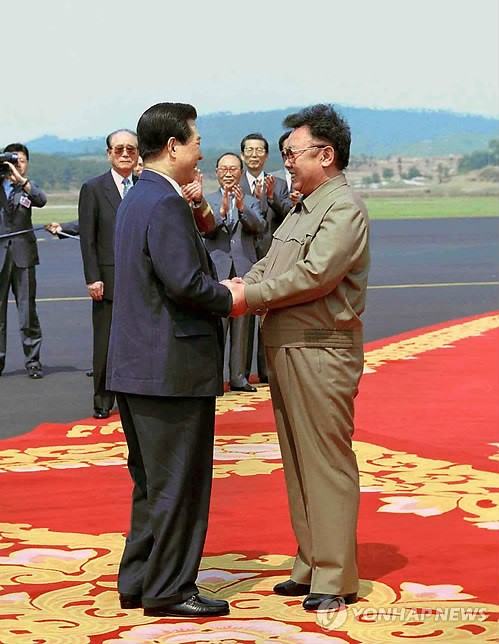2000 Inter-Korean Summit

History of First Inter-Korean Summit
Before 2000| July 4, 1972 | July 4th inter-Korean joint declaration (Lee Hu-rak, head of the South Korean National Intelligence Service visited North Korea in secret and realized the first-ever inter-Korean authorities-level dialogue.) |
|---|---|
| July 25~27, 1994 | Then South Korean President Kim Young-sam and then North Korean leader Kim Il-sung were initially to hold an inter-Korean summit, but the plan was canceled due to the abrupt death of Kim Il-sung. |
| Mid-February | Officials from South and North Korea began making contact. |
|---|---|
| March 9 | Then South Korean President Kim Dae-jung announced the four-point ‘Berlin Declaration,’ in which he promised direct dialogue and cooperation between the authorities of the two Koreas, proposed to end the Cold War confrontation and settle on peace in the region, called for the reunion of separated family members and offered to exchange special envoys between the two Koreas. |
| March 17 | Park Ji-won made the first contact with Song Ho-kyung, vice chairman for North Korea’s Asia-Pacific Peace Committee, in Shanghai, China. |
| March 22 | Park made the second contact with Song in Beijing. |
| April 7 | North Korea proposed to hold talks in Beijing on April 8. |
| April 8 | Park and Song made the third contact and signed an agreement on holding an inter-Korean summit. |
| April 10 | South Korean Unification Minister Park Jae-gyu and Culture and Tourism Minister Park Ji-won announced a plan to hold an inter-Korean summit. |
| June 13~15 | The first inter-Korea summit was held in Pyongyang. |
Outcomes of First Inter-Korean Summit
The epithet ‘historic’ is always applied to the first inter-Korean summit, since it is greatly significant that two leaders from South and North Korea met with each other.
The June 15th inter-Korean joint declaration summarizes the outcomes of the first inter-Korean summit. Some of them have reaped pragmatic and specific results since 2000, while others have been deadlocked due to repeated setbacks. Relations between South and North Korea have developed and expanded, which is another worth-mentioning result of the June 15th joint declaration.
Agreements Specified in the June 15th Joint Declaration
1. The two Koreas agree to achieve the reunification of Korea in an independent way.
2. South Korea advocates confederation approaches, and North Korea proposes a loosely-knit federation when seeking a unification formula.
3. The two sides agree to resolve humanitarian issues. (Exchanges of delegations of separated family members and a solution to the issue of long-term political prisoners)
4. The two sides decide to invigorate bilateral economic exchanges and build mutual trust.
5. They promise to hold authorities-level dialogue to implement the agreements.
Positive Results of the June 15th Joint Declaration
| Separated family issue | ㆍThe two Koreas have continuously held reunions of separated family members. ㆍThe two sides have been building a permanent reunion center for separated families. (Construction of the center hasn’t been completed.) |
|---|---|
| Expansion of inter-Korean economic cooperation | ㆍGaeseong industrial park business ㆍReconnection of the two cross-border railways- the Gyongeui-line and the Donghae line ㆍInter-Korean cooperation for light industry and mineral resources development |
| Authorities-level dialogue | ㆍMinisterial-level talks (The two sides held 21 rounds of Cabinet-level talks until early June, 2007, holding the high-level talks on a regular basis.) ㆍMinisterial-level talks (The two sides held 21 rounds of Cabinet-level talks until early June, 2007, holding the high-level talks on a regular basis.) ㆍMilitary talks (The two sides have held several rounds of military talks at different levels, such as working-level military talks, general-level talks and defense ministers’ talks. But the defense ministers’ talks were held only once, and inter-Korean military talks have made little progress overall.) |
June 15 Joint Declaration in 2000
In accordance with the noble will of the entire people who yearn for the peaceful reunification of the nation, President Kim Dae-jung of the Republic of Korea and National Defense Commission Chairman Kim Jong-il of the Democratic People’s Republic of Korea held a historic meeting and summit talks in Pyongyang from June 13 to June 15, 2000.
The leaders of the South and the North, recognizing that the first meeting and the summit talks since the division of the country were of great significance in promoting mutual understanding, developing South-North relations and realizing peaceful reunification, declared as follows:
1. The South and the North have agreed to resolve the question of reunification on their own Initiative and through the joint efforts of the Korean people, who are the masters of the country.
2. Acknowledging that there are common elements in the South’s proposal for a confederation and the North’s proposal for a federation of lower stage as the formula for achieving reunification, the South and the North agreed to promote reunification in that direction.
3. The South and the North have agreed to promptly resolve humanitarian issues such as exchange visits by separated family members and relatives on the occasion of the August 15 National Liberation Day and the question of former long-term prisoners who had refused to renounce Communism.
4. The South and the North have agreed to consolidate mutual trust by promoting balanced development of the national economy through economic cooperation and by stimulating cooperation and exchanges in civic, cultural, sports, public health, environmental and all other fields.
5. The South and the North have agreed to hold a dialogue between relevant authorities in the near future to implement the above agreement expeditiously.
President Kim Dae-jung cordially invited National Defense Commission Chairman Kim Jong-il to visit Seoul, and Chairman Kim Jong-il decided to visit Seoul at an appropriate time.
June 15, 2000
President
Republic of Korea
Kim Dae-jung
Chairman, National Defense Commission
Democratic People’s Republic of Korea
Kim Jong-il
